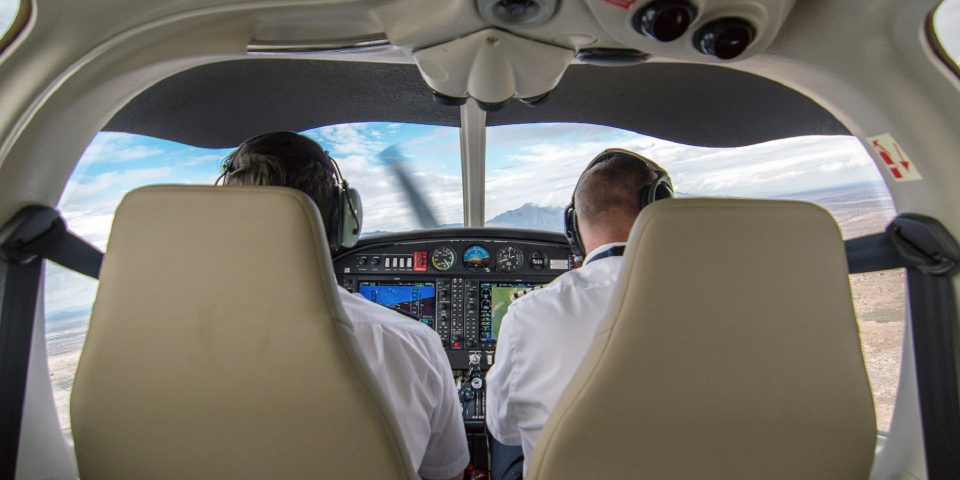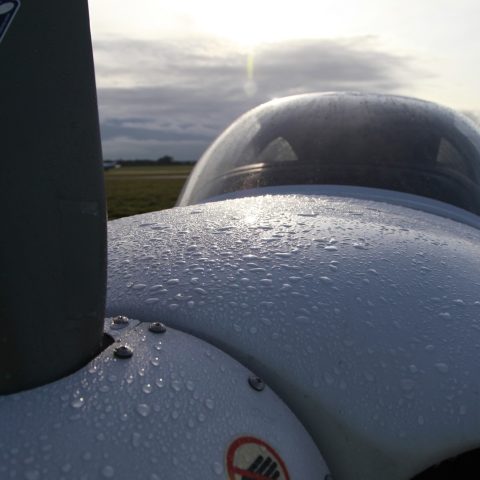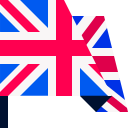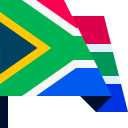Three ways to become a pilot with British Academy of Aviation Sciences
-
UKCAA / EASA Integrated ATPL
-
BSc (Hons) Aviation - Pilot Degree Programme with ATPL
-
Theoretical Knowledge
- Full-time course
- From little to no flying experience to a fully qualified airline pilot in approximately 70 weeks
- Includes 39 weeks of flight training
- Full-time, three-year degree course
- Graduate with two professional qualifications: an aviation degree and an ATPL, ready to start your pilot career
- Designed by BAOAS and the University of Central Lancashire
- Access to student finance available
- For those with a Private Pilot Licence (PPL) and are ready to take the next step
- UKCAA or EASA ground school training
- State-of-the-art facilities
British Academy of Aviation Sciences
graduates now fly for airlines such as:




Three ways to become a pilot with British Academy of Aviation Sciences
Airline pilot training is no mean feat, and there are lots of things you’ll need to know before you start your journey to become an airline pilot. You will need an Airline Transport Pilot Licence (ATPL) and a Class 1 Medical Certificate to become a commercial airline pilot.
- You will be issued a ‘frozen ATPL’ at the end of your commercial pilot training, this enables you to apply for jobs as a First Officer
- To ‘unfreeze’ your ATPL, you will need to complete 1,500 flying hours
- You have the choice to obtain a UKCAA or an EASA pilot licence, which enables you to operate a UK-registered or an EASA-registered commercial aircraft respectively
- It takes an average of 70 weeks to complete your flight school training before cadets embark on their rewarding careers
- You will need passion, self-discipline, technical aptitude, problem-solving skills, teamwork, spatial awareness, and the ability to make decisions under pressure to become a successful airline pilot


What does a pilot do?
As a pilot working for a commercial airline, you can expect to work weekdays, evenings, weekends and bank holidays completing typically between 39 to 41 hours a week.
1: Research pilot training programmes
With so many routes to becoming a pilot in the UK and Europe, it can feel difficult to know where to start. From integrated and modular training courses to structured programmes specific to major airlines, there are plenty of commercial pilot training programmes to choose from.
British Academy of Aviation Sciences is renowned for the quality of its pilot training. What sets us apart is our state-of-the-art flight school and training facilities, modern aircraft with the latest aviation flight deck technology and our team of instructors with thousands of hours combined experience.
2: Check you meet the entry criteria & have the common skills required to become a pilot
To work as a professional commercial pilot you will need an Airline Transport Pilot Licence (ATPL) and a Class 1 Medical Certificate. To obtain your ATPL you will need to complete the necessary airline pilot training.
To apply for a pilot training course, prospective cadets need to meet entry criteria relating to age and height, language, education, medicals, visas and background checks. For course-specific entry requirements, please visit each of our pilot training courses.
- Be at least 17 to submit an application and 18 to commence training
- Minimum height: 5ft 2in (157cm) | Maximum height: 6ft 3in (191cm)
- Fluent in English (verbal and written). Non-native English speakers must achieve level 5.5 individual and overall in IELTS or equivalent ICAO level 4 prior to starting training
- A minimum of five GCSEs grade C/4 or above, including Mathematics, English and Science
Job-specific skills to become a pilot:
- A good understanding of maths and physics
- Excellent communications skills
- Ability to work well in a team and to demonstrate leadership skills
- Excellent spatial awareness and coordination, and ability to remain calm under pressure
Upon graduation from your pilot training, you will be issued a ‘frozen ATPL’ which enables you to apply for jobs as a First Officer. To ‘unfreeze’ your ATPL, you will need to complete 1,500 flying hours of experience.

3: Selection
We will only accept applicants onto our British Aero Academy training programmes who have the potential to become a commercial pilot and we will assess you on both the technical and non-technical skills required.
The BAOAS selection process is as follows:
- Once you have completed your application for your chosen pilot training programme it will be screened by our selection team
- Providing your application passes our screening process you will then be invited to a one-day selection event, either remotely (Monday, Tuesday, Thursday, Friday), or in-person (Wednesday) at our London Training Centre located near Gatwick Airport
- Prior to your selection day you will be asked to complete an online behavioural assessment
- Your selection day which will consist of an interview and Cut-e aptitude tests
If you have any questions regarding selection, please contact one of the team at: 01118581212

4: Ground school training
Once through selection, you will embark on the initial phase of flight training known as ground school. You will meet your fellow coursemates at one of our approved training locations and complete your classroom and computer-based Theoretical Knowledge training as part of your training to become a pilot.
5: Foundation flight training
Often the most exciting stage of becoming a pilot, you will take to the skies, learning to fly single-engine piston aircraft at one of our global training centres, such as Orlando, Florida. The exact aircraft, location and duration of this phase of commercial pilot training will depend on your programme.
6: Commercial and instrument flight training
The content of this training will depend on the course you have chosen but will involve single and multi-engine aircraft and assessments in our Full Flight Simulators.
7: Intermediate flight training
If you are on a Multi-Pilot Licence (MPL) route, this will involve aircraft specific Type Rating training in an A320 or Boeing 737. On our Airline Transport Pilot Licence (ATPL) route you will take our world-renowned Airline Pilot Standards (APS) course, which includes Multi-Crew Cooperation (MCC), Crew Resource Management (CRM) and Jet Orientation Training (JOT).

8: Airline placement
ATPL, BSc (Hons) or APS MCC Modular graduates will be placed in our Graduate Placement Pool where our dedicated team will work to secure your employment as a Co-Pilot with a global airline.
9: Advanced pilot training
You will undertake aircraft specific Type Rating training to prepare you to fly for your airline. You will also complete Line Orientated Experience (LOE) and line check with your airline employer as well as safety, emergency and procedures training.
10: First Officer
Congratulations! You are now employed as a First Officer, sitting in the right-hand seat of the flight deck flying passengers on commercial aircraft. BAOAS can provide all the further training you need to progress your career up to the rank of Captain.

First solo
During flight training, one of the biggest milestones in becoming a pilot is completing your first solo. Here's British Aero Academy cadet Abdulaziz Aldousari reaching that very moment!
What are the alternative routes to becoming a pilot?
Whilst we recommend cadets complete our Integrated ATPL training (which follows the above steps and is the most direct route to becoming a pilot), there are alternative routes to consider to complete pilot training in the UK and Europe.
A degree is not essential to becoming a pilot but does offer an alternative approach when combined with pilot training. We have a partnership with the University of Central Lancashire (UCLan) to offer pilot training alongside their BSc (Hons) Aviation – Pilot Programme. In approximately 3 years, you will graduate with a degree and your ‘frozen’ ATPL. Integrating this degree into your commercial pilot training may provide access to financial support from Student Finance England.
Our Flexible ATPL also takes you from little to no flying experience to a fully qualified airline pilot, but is completed in a more modular fashion. This means you can take breaks in between phases of training to travel, work, or study. The course retains all the benefits of the Integrated programme.
Modular ATPL training allows you to complete individual courses with British Aero Academy, depending on where you are in your flight training journey.
What pilot jobs are available when I graduate?
Our commercial pilot training courses are designed to be the first step towards securing a successful career in aviation, whether that’s becoming a commercial airline pilot for a UK or European airline.
With more than 40 years of heritage in pilot training and a dedicated placement team to secure your role as an airline pilot, you couldn’t be in safer hands than with British Aero Academy.
In order of rank, you can expect your pilot career progression to be as follows:
- First Officer – second-in-command to the airline Captain
- Senior First Officer – the most senior position in the right-hand seat
- Captain – you will command the aircraft in the left-hand seat




How much does it cost to become a pilot in the UK?
The cost of pilot training is reflective of the future benefits and rewards you can expect to receive when you become a qualified commercial pilot.
The exact cost to become a pilot will differ depending on the route you take and the Approved Training Organisation (ATO) you opt for.
Our pilot training course costs:
- Integrated ATPL = £94,960 (includes bespoke accommodation offering)
- BSc (Hons) Aviation – Pilot Programme = Dependent on level of student finance
- Flexible ATPL = £99,500 (includes bespoke accommodation offering)
- Individual Modules = Varies
Where will I complete my commercial pilot training?
You will complete your commercial pilot training at our flight schools located across the UK and USA.
Each of our British flight schools are modern sites equipped with the latest training facilities including over 100 aircraft, Flat Panel Trainers, Fixed Training Devices and our flagship RealitySeven Full Flight Simulators (including: Boeing 737 and Airbus A320).
With excellent Flight Instructors and state-of-the-art facilities, our aim is to help you learn how to become the most successful commercial pilot you can be.
Contact us
Please complete the form below to contact our team for more information on our Airline Academy.












